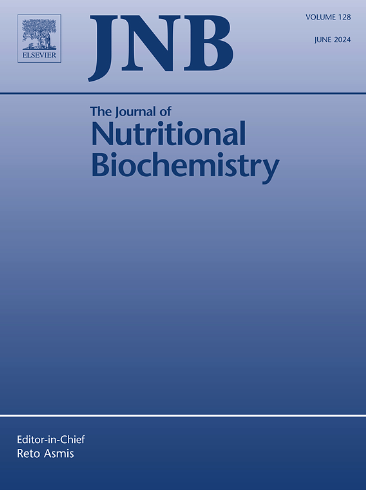Investigation of the protective mechanism of paeoniflorin against hyperlipidemia by an integrated metabolomics and gut microbiota strategy
IF 4.8
2区 医学
Q1 BIOCHEMISTRY & MOLECULAR BIOLOGY
引用次数: 0
Abstract
The prevalence of hyperlipidemia is gradually increasing globally, posing a serious threat to public health. Previous studies have shown that paeoniflorin (PF) effectively improved abnormal lipid metabolism in atherosclerotic mice. However, the anti-hyperlipidemia effect and potential mechanism of paeoniflorin remain unclear. The gut microbiota (GM) is closely related to hyperlipidemia. This study was aimed to investigate effects of PF on improving the health of high-fat diet (HFD)-induced hyperlipidemic mice by modulating GM. A hyperlipidemic mouse model was established using an HFD, and the hypolipidemic effect of PF was detected in vivo. Besides16S ribosomal RNA sequencing and SCFAs metabolic analysis were performed to explore the lipid-lowering mechanism of PF. Importantly, fecal microbiota transplantation (FMT) experiments were conducted to verify the lipid-lowering mechanism of PF. The results showed that PF significantly inhibited the development of hyperlipidemia, reduced serum lipid and inflammatory cytokine levels, and improved liver steatosis. In addition, 16S rRNA sequencing revealed that PF treatment significantly increased the relative abundance of Lactobacillus, Coprococcus, Blautia, Roseburia, and Bacteroides while reducing the relative abundance of Prevotella. Meanwhile, the results of targeted metabolomics indicate that PF therapy can effectively restore butyric acid and propionic acid levels in the intestine. The FMT experiments further demonstrated that PF improved hyperlipidemia by regulating GM and its metabolites. The above results provide a valuable theoretical basis for the development and application of PF as a functional food for hyperlipidemia.
通过代谢组学和肠道微生物群综合策略研究芍药苷对高脂血症的保护机制
高脂血症的患病率在全球范围内逐渐上升,对公众健康构成严重威胁。已有研究表明,芍药苷(paeoniflorin, PF)能有效改善动脉粥样硬化小鼠异常脂质代谢。然而,芍药苷的抗高脂血症作用及其潜在机制尚不清楚。肠道菌群(GM)与高脂血症密切相关。本研究旨在探讨茯苓多糖通过调节GM对高脂饮食诱导的高脂血症小鼠健康状况的影响。采用高脂饮食法建立高脂血症小鼠模型,在体内检测茯苓多糖的降血脂作用。此外,我们通过16s核糖体RNA测序和SCFAs代谢分析来探索PF的降脂机制,并通过粪便微生物群移植(FMT)实验来验证PF的降脂机制,结果表明PF能显著抑制高脂血症的发生,降低血脂和炎症细胞因子水平,改善肝脏脂肪变性。此外,16S rRNA测序结果显示,PF处理显著增加了乳杆菌、粪球菌、Blautia、Roseburia和Bacteroides的相对丰度,同时降低了Prevotella的相对丰度。同时,靶向代谢组学结果表明,PF治疗可以有效地恢复肠道中丁酸和丙酸的水平。FMT实验进一步证明了PF通过调节GM及其代谢物改善高脂血症。上述结果为PF作为高脂血症功能食品的开发和应用提供了有价值的理论依据。
本文章由计算机程序翻译,如有差异,请以英文原文为准。
求助全文
约1分钟内获得全文
求助全文
来源期刊

Journal of Nutritional Biochemistry
医学-生化与分子生物学
CiteScore
9.50
自引率
3.60%
发文量
237
审稿时长
68 days
期刊介绍:
Devoted to advancements in nutritional sciences, The Journal of Nutritional Biochemistry presents experimental nutrition research as it relates to: biochemistry, molecular biology, toxicology, or physiology.
Rigorous reviews by an international editorial board of distinguished scientists ensure publication of the most current and key research being conducted in nutrition at the cellular, animal and human level. In addition to its monthly features of critical reviews and research articles, The Journal of Nutritional Biochemistry also periodically publishes emerging issues, experimental methods, and other types of articles.
 求助内容:
求助内容: 应助结果提醒方式:
应助结果提醒方式:


